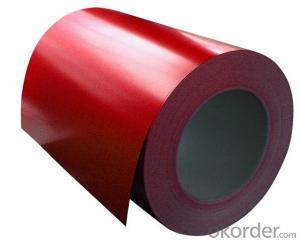Steel, the backbone of modern industry, has been a cornerstone of human progress for centuries. Known for its strength, durability, and versatility, steel is a material that has shaped the world we live in today. But what exactly is steel, and how has it become such an integral part of our lives? Let’s take a closer look at this fascinating material and explore its many uses and characteristics.
The Essence of Steel
Steel is an alloy primarily composed of iron, with a small percentage of carbon added to enhance its properties. The carbon content, usually between 0.2% and 2.1%, is what gives steel its unique strength and flexibility. The process of making steel involves heating iron ore and carbon in a blast furnace, which removes the oxygen from the iron and leaves behind a material that is both strong and malleable.
A History of Steel
The history of steel is as rich and varied as the material itself. Evidence of steel production dates back to ancient India and the Middle East, where blacksmiths discovered the art of creating steel by hammering and folding iron to remove impurities. The steel industry took a significant leap forward during the Industrial Revolution, with the development of the Bessemer process, which allowed for the mass production of steel at a much lower cost.
The Many Faces of Steel
Steel comes in many forms, each with its own unique properties and applications. One of the most common forms is carbon steel, which is used in everything from automobiles to construction. Stainless steel, known for its resistance to corrosion, is a popular choice for cutlery and medical instruments. Then there’s alloy steel, which is made by adding other elements to improve specific properties, such as heat resistance or electrical conductivity.
The Making of Steel
The process of making steel is a complex one, involving multiple steps. It begins with the extraction of iron ore from the ground, which is then crushed and processed to remove impurities. The purified iron ore is then mixed with coke and limestone and heated in a blast furnace to produce molten iron. This molten iron is then further refined in a steel furnace, where additional elements are added to create the desired alloy. Finally, the steel is cooled, shaped, and ready for use.
Steel in Everyday Life
You might not realize it, but steel is all around us. From the bridges we cross to the cars we drive, steel is an essential part of our daily lives. It’s in the appliances we use, the buildings we live and work in, and even the roads we travel on. Steel’s strength and durability make it an ideal material for these applications, and its recyclability makes it an environmentally friendly choice as well.
The Future of Steel
As we look to the future, steel continues to be a vital material in the development of new technologies and innovations. From renewable energy sources to advanced manufacturing processes, steel is at the forefront of progress. Researchers are also exploring ways to make steel production more sustainable, reducing its environmental impact while maintaining its strength and versatility.
A Personal Connection to Steel
I have a personal connection to steel, having grown up in a family with a long history in the steel industry. My grandfather worked in a steel mill, and I remember visiting him there as a child. The sight of the molten steel, the sound of the hammers, and the smell of the furnace are all etched in my memory. Steel is not just a material to me; it’s a part of my heritage and a testament to human ingenuity.
The Versatility of Steel
One of the most remarkable aspects of steel is its versatility. It can be bent, shaped, and molded into an endless variety of forms. This adaptability is what makes steel such a popular choice for artists and designers alike. From sculptures to architectural marvels, steel’s potential for creativity is limitless.
The Challenges of Steel Production
Despite its many benefits, steel production is not without its challenges. The process is energy-intensive and can have a significant environmental impact. However, advancements in technology and a focus on sustainability are helping to mitigate these issues. Steel manufacturers are investing in cleaner production methods and recycling initiatives to reduce their carbon footprint.
The Art of Steelworking
The art of steelworking is a testament to the skill and craftsmanship of those who work with this material. From the initial heating and shaping to the final polishing and finishing, each step requires precision and care. The result is a product that is both functional and beautiful, a true reflection of the artist’s vision.
Conclusion
In conclusion, steel is a material that has played a pivotal role in shaping our world. Its strength, durability, and versatility make it an essential component in countless applications. As we look to the future, steel will continue to be a driving force in innovation and progress. Whether it’s in the construction of new buildings, the development of sustainable energy solutions, or the creation of breathtaking art, steel will remain at the heart of human achievement.

